Elon Musk, the world’s richest person, is the driving force behind several industry-leading companies. He began his entrepreneurial journey with ventures like Zip2 and X.com (his early fintech company, not Twitter), which later became PayPal. In 2002, he founded SpaceX and joined Tesla Motors in 2004, becoming the company’s CEO and product architect. Thanks to his tremendous success in the business world, Elon Musk’s net worth in 2025 is estimated at over $330 billion.
Beyond his many business endeavors, Musk has been involved in many political activities, especially in recent years. In January 2025, after donating over $277 million to groups supporting Donald Trump’s presidential campaign, he was appointed a senior advisor to President Trump and became the de facto head of the Department of Government Efficiency (DOGE).
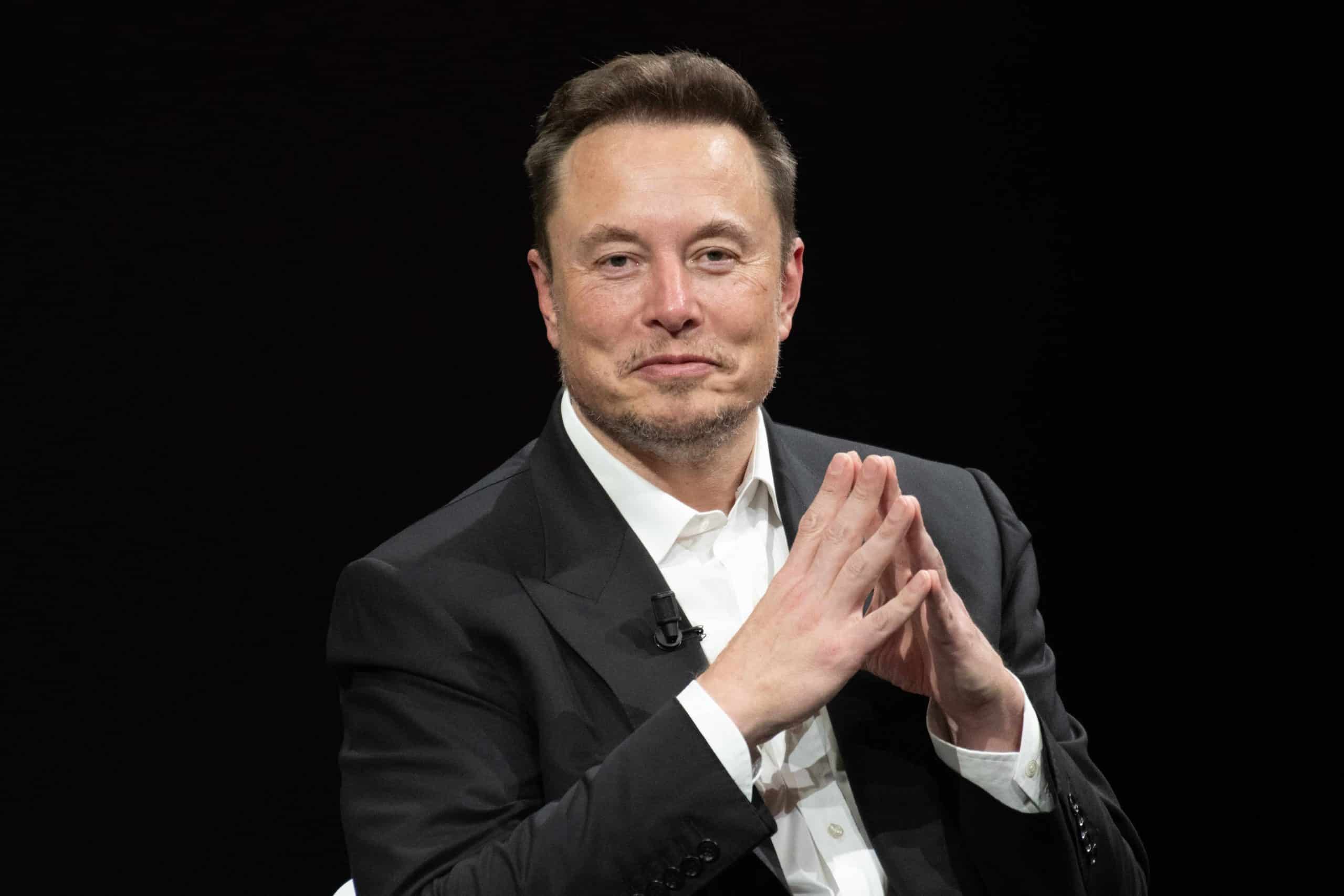
In this article, we will explore Musk’s wealth, his impressive entrepreneurial journey, the recent fluctuations in his net worth, and more.
Breaking Down Elon Musk’s Net Worth in 2025
Over the years, Musk has repeatedly described himself as cash-poor with little interest in the “material trappings of wealth.” The vast majority of his net worth is tied up in his various companies and investments. In May 2020, he pledged to sell most of his physical possessions.
Musk’s net worth jumped from $27 billion at the start of 2020 to $150 billion by the end of that year, mostly driven by Tesla’s skyrocketing stock price. However, Musk’s net worth has been extremely volatile for years. In November of that year, he passed Facebook co-founder Mark Zuckerberg and became the third-richest person in the world. Soon after, he surpassed Microsoft co-founder Bill Gates for the second spot.
Musk became the richest person in the world in 2021 when he surpassed Jeff Bezos, the founder of Amazon, in January, with a net worth of $185 billion. In 2022, he lost $200 billion from his net worth, becoming the first person in history to do so.
Musk’s net worth soared after the 2024 United States presidential election. In December of that year, he became the first person with a net worth of over $400 billion.
However, his net worth is significantly lower these days. He remains the world’s richest individual, but recent market fluctuations – as well as a deluge of controversies – have impacted his fortune. His wealth has been subject to a lot of volatility recently, with recent events reducing Musk’s net worth significantly.
Below you can find a detailed breakdown of Musk’s major assets, sales, and sources of income, all of which contribute to his net worth.
| Asset or Income Source | Contribution to Net Worth |
| Zip2 sale (1999) | $22 million for his 7% stake |
| PayPal sale (2002) | $175.8 million for his 11.72% stake |
| SpaceX initial investment (2002) | -$100 million |
| SolarCity investment | -$9 million |
| SolarCity sale to Tesla (2016) | $440 million for his 22% stake |
| Investment in The Boring Company (2016) | $113 million |
| Tesla’s stock | 12% of Tesla without options + potential 9% from stock options (pending appeal) |
| SpaceX | 42% ownership worth $147 billion (valued in 2024) |
| Purchase of X | -$44 billion |
| Twitter (X) | Full ownership worth $44 billion (valued in March 2025) |
| xAI | 54% ownership worth $43.2 billion (valued in 2025) |
| Initial investment in Neuralink | -$100 million |
| Neuralink and Boring Company | $10 billion total |
| Total net worth: | $330+ billion |
Elon Musk Net Worth: Early Life and Education
Elon Reeve Musk was born on June 28, 1971, in Pretoria, the administrative capital of South Africa. His mother, Maye, was born in Canada and worked as a model and dietitian. His father, Errol Musk, is a South African electromechanical engineer, sailor, property developer, pilot, and consultant.
As for siblings, Elon has a younger brother named Kimbal and a younger sister named Tosca. He also has four half-siblings on his father’s side.
Elon Musk grew up in a wealthy family. His father was involved with Zambian emerald mines and served on the Pretoria City Council. After his parents’ divorce in 1080, Elon chose to live with his father, though he later became estranged from him.
Musk had a tough time at a wilderness school and was seriously injured in a fight. Despite this, he became an avid reader, drawing inspiration from books like The Hitchhiker’s Guide to the Galaxy and The Lord of the Rings.
Elon Musk attended various schools in South Africa, eventually graduating from Pretoria Boys High School. To avoid mandatory military service under apartheid, he applied for Canadian citizenship.
In 1989, he moved to Canada, where he worked a series of odd jobs before he enrolled at Queen’s University, including work at a farm and a lumber mill. In 1992, he transferred to the University of Pennsylvania, earning degrees in physics and economics.
In 1995, Musk was accepted to a graduate program in materials science at Stanford University, but he turned down the offer to pursue opportunities in the tech industry.
While at school, Musk interned at startups in Silicon Valley. He worked at the energy storage startup Pinnacle Research Institute, investigating electrolytic supercapacitors for energy storage, as well as at the startup Rocket Science Games.
According to The Washington Post, Musk didn’t have legal authorization to stay and work in the United States after he didn’t enroll at Stanford University. However, he has since claimed that he was permitted to work, as his student visa had been converted to an H1-B.
Musk’s Personal Life and Family
Elon Musk became a citizen of the United States in 2002 and lived in California until late 2020, when he moved to Cameron County in Texas. He shared that he has Asperger’s syndrome in a 2021 SNL appearance, but he hasn’t been formally diagnosed.
As for his family, Musk has fathered 13 known children, with one infant passing away in 2002. There is a rumored 14th child that remains unacknowledged, though.
Musk had five children with his first wife, author Justine Wilson – twins in 2004 and triplets in 2006. Their trans daughter, Vivian, transitioned and changed her name in 2022, cutting ties with Elon Musk. Musk has since said that Vivian is dead to him because of her transition.
Musk married actress Talulah Riley in 2010 (and again in 2013). They divorced for the second time in 2016. In 2017, he dated Amber Heard. With musician Grimes, Musk had three children between 2020 and 2022, one via surrogate. In 2023, Grimes sued Musk over custody.
Musk also has four children with Neuralink executive Shivon Zilis – twins in 2021 and two more kids in 2024 and 2025. In 2024, he also had a child with author Ashley St. Clair.
Musk’s Career Trajectory and Success in Tech
When Musk decided not to enroll in Stanford University, he went on to join the Internet boom. He applied for a job at Netscape, but he never received a response from the company. This left him open to new opportunities, so he founded his first business with his brother and another partner with funds borrowed from Musk’s father. Let’s see how his story led him to become the world’s richest person.
Zip2
In 1995, Musk partnered with his brother Kimbal, and Greg Kouri to found the web software company Zip2 Corp., using an undisclosed sum they borrowed from his father. The company was initially named Global Link Information Network, based in Palo Alto, California.
The trio secured $3 million in funding from Mohr Davidow Ventures in 1996, which allowed them to rebrand as Zip2 and expand their services. Soon enough, the business partnered with over 160 different newspapers, including major clients like The New York Times, Knight Ridder, and Hearst Corporation. They provided online city guide software that featured maps, directions, and yellow pages.
In February 1999, after only several years of fast-growing success, Zip2 was sold to Compaq Computer for $307 million in cash. Elon Musk reportedly received $22 million for his 7% stake in the company.
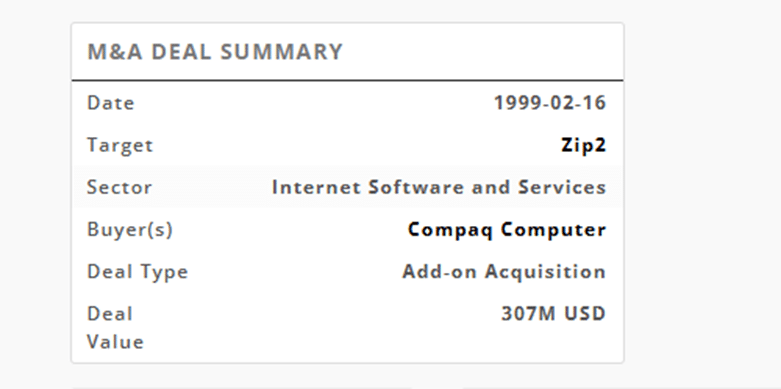
X.com and the Merger with Confinity
In 1999, after the sale of his first business, Musk cofounded X.com, an online payment company, where he served as CEO. X.com was among the first federally insured online banks, attracting over 200,000 customers within its first months.
However, there were concerns about Musk’s inexperience at the time, which is why the board replaced him with Bill Harris, CEO of Intuit, by the end of 1999.
In March 2000, X.com merged with Confinity, a competitor founded by Max Levchin and Peter Thiel, which developed a popular money-transfer service known as PayPal.
After the merger, Musk briefly returned as CEO at the company but was ousted in October 2000 due to disagreements over technological directions. Peter Thiel then assumed the role of CEO of the company.
In 2001, the merged business was rebranded as PayPal, focusing solely on its online payment services. In 2002, eBay acquired PayPal for $1.5 billion in stock. At the time, Musk held a stake of 11.72% stake, which amounted to around $175.8 million.
Fast forward to 2017, Elon Musk repurchased the domain name X.com from PayPal, expressing that it held sentimental value. After acquiring Twitter, he rebranded it to X, replacing the iconic blue bird logo. The letter X is also present in Elon Musk’s Tesla Model X and SpaceX. He also named one of his children “X Æ A-Xii.”
SpaceX
In 2001, Elon Musk engaged with the nonprofit Mars Society, exploring the feasibility of establishing a plant-growth chamber on Mars. To advance his idea, he sought to acquire intercontinental ballistic missiles (ICBMs) from Russian aerospace firms Kosmotras and NPO Lavochkin.
His negotiations with the company were unsuccessful, so Musk redirected his efforts toward developing cost-effective rockets himself. This led to the founding of Space Exploration Technologies Corp., famously known as SpaceX, in May 2002. Musk launched this business using $100 million of his personal funds and assumed the roles of CEO and Chief Engineer.
SpaceX’s launch vehicle, the Falcon 1, experienced setbacks with three failed attempts between 2006 and 2008. Despite the challenges, Musk’s company secured a $1.6 billion contract from NASA in 2008 for Falcon 9-launched Dragon spacecraft missions to the International Space Station (ISS). This followed the Space Shuttle’s retirement in 2011.
In 2012, SpaceX’s Dragon spacecraft became the first commercial vehicle to dock with the ISS. The company continued to innovate by developing reusable rocket technology and achieved its first successful landing of Falcon 9’s first stage on a land platform in 2015.
SpaceX is still in the early stages of developing advanced micro-satellites operating in large formations. Announcement in 2 to 3 months.
— Elon Musk (@elonmusk) November 11, 2014
In February 2018, SpaceX launched the Falcon Heavy, which was the most powerful operational rocket at the time. The Falcon Heavy carried Musk’s personal Tesla Roadster to orbit as a dummy payload.
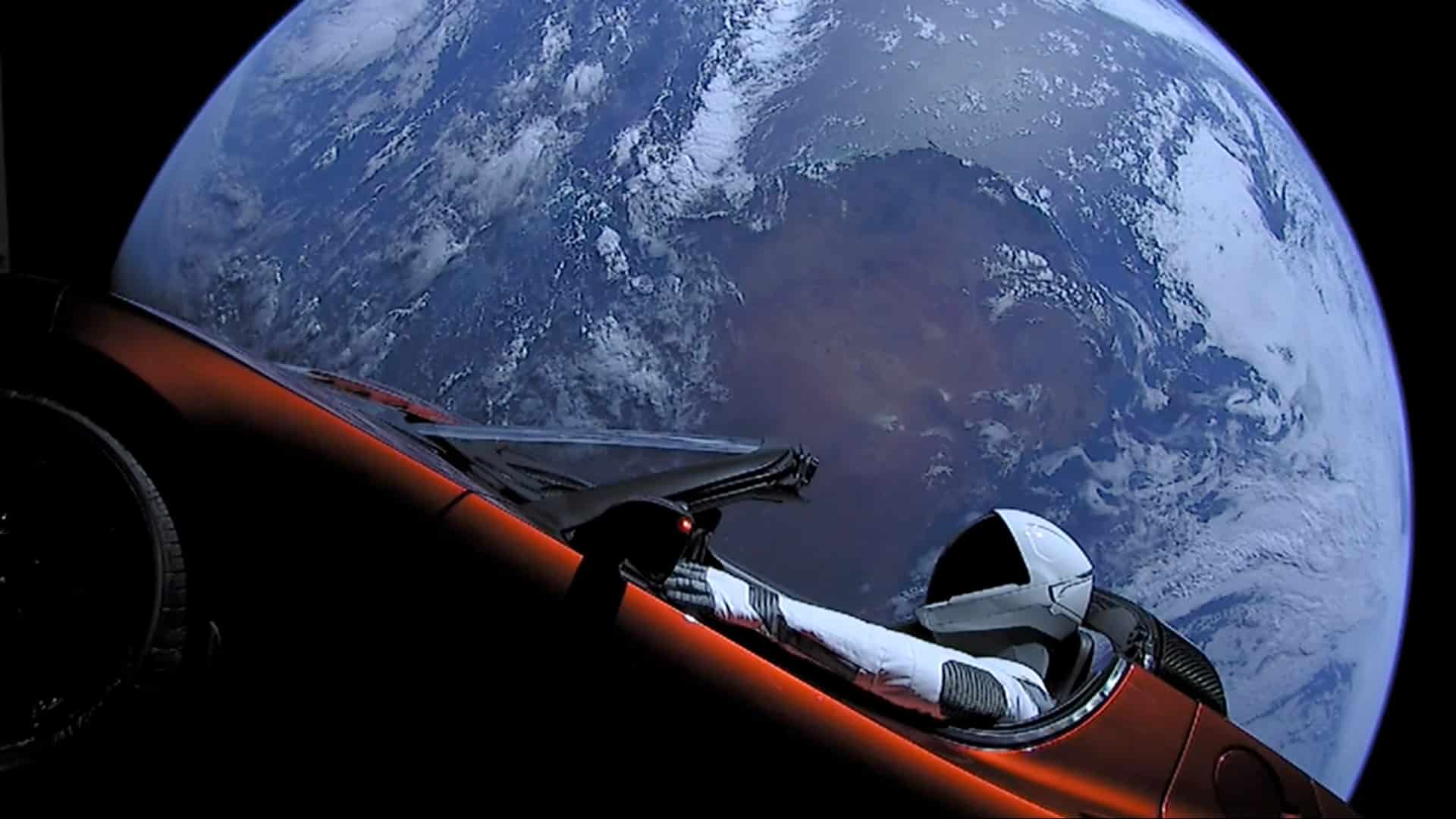
The company has since been developing a fully reusable super heavy-lift launch vehicle called Starship, aiming to enable missions to Mars.
SpaceX’s Starlink project, initiated in 2015, aims to provide global satellite internet coverage. By 2019, the first large constellation of satellites was deployed, with the project estimated to cost around $10 billion.
During the Russian invasion of Ukraine in 2022, Starlink provided critical internet services in conflict-affected areas. However, geopolitical tensions have led to discussions about Europe’s reliance on U.S.-based satellite services, which prompted initiatives to develop independent communication systems instead.
Exactly!
To be extremely clear, no matter how much I disagree with the Ukraine policy, Starlink will never turn off its terminals.
I am simply stating that, without Starlink, the Ukrainian lines would collapse, as the Russians can jam all other communications!
We would never…
— Elon Musk (@elonmusk) March 9, 2025
The Success with Tesla
Tesla Inc., originally known as Tesla Motors, was founded in 2003 by Martin Eberhard and Marc Tarpenning in San Carlos, California. The company was named after Nikola Tesla, a world-famous inventor and electrical engineer.
In February 2004, Elon Musk led Tesla’s Series A funding round, investing $6.35 million in the company. The investment automatically made him the majority shareholder of the company, and the chairman of the board.
Over the years, Musk has played a significant role in overseeing the design of Tesla’s vehicles. After internal conflicts and the financial crisis of 2007-2008, he became CEO and product architect of Tesla.
“I just like working, making products people love and spending time with friends and family.”
Elon Musk pic.twitter.com/oViuLEe9sE— Tesla Owners Silicon Valley (@teslaownersSV) April 10, 2025
Tesla’s first vehicle, the Roadster, debuted in 2008 with Musk as Tesla’s CEO. It was the first production car to use lithium-ion battery cells, with approximately 2,500 units sold.
Following the Roadster, Tesla introduced several models:
- Model S (2012) – a luxury sedan
- Model X (2015) – an SUV known for its falcon-wing doors
- Model 3 (2017) – a more affordable sedan
- Model Y (2020) – a compact crossover SUV
- Cybertruck (2023) – an all-electric pickup truck
Tesla has also expanded its operations by building what it calls ‘Gigafactories’ for battery and vehicle production in Nevada, Shanghai, Berlin, and Texas. In October 2021, the company’s market capitalization reached $1 trillion, which made it one of the most valuable companies worldwide, not to mention a highly valuable carmaker.
Tesla’s Acquisition of SolarCity and the Birth of Tesla Energy
In 2006, Elon Musk’s cousins Lyndon and Peter Rive cofounded SolarCity. Musk provided the initial concept and an initial $9 million to fund the business.
Soon enough, SolarCity grew into the second-largest provider of solar power systems in the United States by 2013.
In 2014, Musk proposed a plan to build a large-scale solar production facility in Buffalo, New York – three times the size of the largest existing U.S. solar plant at the time. The construction of the Gigafactory 2 began that same year and was completed in 2017. It initially worked as a joint venture with Panasonic, producing solar panels and related technologies.
In 2016, Tesla acquired SolarCity for $2 billion, even though the firm was drowning in over $1.5 billion in debt, and integrated it with its battery unit to form Tesla Energy. The move expanded Tesla’s reach into solar energy and sustainable energy solutions.
However, the acquisition was met with a lot of skepticism from investors who argued that Musk’s ownership and role in Solar City were massive conflicts of interests. As a result, Tesla’s stock price dropped by over 10% after the announcement. The acquisition was very controversial, leading to multiple shareholder lawsuits where people accused Musk and Tesla’s board of orchestrating the deal to benefit them personally.
In 2020, Tesla’s board settled the lawsuit, but Musk remained the sole defendant. In 2022, a court ruled in Musk’s favor, concluding that the acquisition of SolarCity was a legitimate business decision.
At the time of the sale, Musk was the largest shareholder of SolarCity, owning about 22% of the company. This means that he earned around $440 million from the sale. Today, Tesla Energy is a leader in renewable energy, offering products such as Powerwall and Solar Roof.
Neuralink
In 2016, Elon Musk founded Neuralink with eight scientists and engineers: Max Hodak, Benjamin Rapoport, Paul Merolla, Dongjin Seo, Philip Sabes, Tim Hanson, Vanessa Tolosa, and Tim Gardner. Neuralink is a neurotechnology company dedicated to developing implantable brain-machine interfaces.
Musk made an initial investment of $100 million in this brand. With his investment and partnership with others, he laid the foundation for the company’s diverse goals, which included:
- Enhancing memory
- Enabling direct communication with computers
- Treating neurological conditions like spinal cord injuries
In May 2023, Neuralink received approval from the U.S. Food and Drug Administration (FDA) to commence its first human clinical trial. In January 2024, the first patient received an implant from the company. As of March 2025, the company’s valuation has surged to over $9 billion.
The first human received an implant from @Neuralink yesterday and is recovering well.
Initial results show promising neuron spike detection.
— Elon Musk (@elonmusk) January 29, 2024
The Boring Company
Established in 2017 by Elon Musk himself, The Boring Company has the goal to alleviate urban traffic congestion using innovative tunnel construction, as well as high-speed, underground transportation systems.
In 2021, The Boring Company completed a 1.7-mile tunnel system beneath the Las Vegas Convention Center. The system transports passengers in Tesla vehicles, reducing travel time across the convention center to under two minutes.
The company has plans to expand the network, known as the Vegas Loop, to include 65 miles and 69 stations and connect various parts of Las Vegas. However, critics argue that the system is drastically less efficient than basic trains, which can transport many times more people per ride.
To improve the efficiency of tunnels, The Boring Company has developed the Prufrock series of tunnel boring machines. The machines are designed to dig more cost-efficiently and faster. They can initiate excavation without extensive site preparation.
In February 2025, The Boring Company signed a preliminary agreement with Dubai’s Road and Transport Authority to develop the Dubai Loop. This would be an underground high-speed transport network spanning 17 kilometers with 11 stations.
Hyperloop
In 2013, Elon Musk introduced the Hyperloop concept. This is a high-speed transportation system propelling pods through vacuum tubes at speeds up to 1,000 km/h. However, despite the initial enthusiasm, as well as the creation of the Hyperloop Pod Competition by SpaceX, the project faced many challenges.
For starters, The Boring Company closed its California test track in 2022, indicating a lack of progress. Next, Hyperloop One ceased operations in 2023 after the investments didn’t yield any viable results.
The concepts remain intriguing, but so far, the practical implementation has proven to be elusive. There is no commercial Hyperloop system currently in operation.
X Corp. and the Acquisition of Twitter
In 2022, Elon Musk made headlines once again with his high-profile acquisition of Twitter. His move sparked a lot of controversy and entirely reshaped the direction of the platform.
Musk’s involvement with Twitter dates back to 2017, when he expressed concern about the platform’s commitment to freedom of speech. By 2022, he had acquired a 9.2% stake in Twitter and became the company’s largest shareholder.
After this purchase, Twitter invited Elon Musk to join the company’s board, but Musk used the opportunity to escalate his involvement. In April 2022, he made an unsolicited offer of $43 billion to buy Twitter, a deal he increased to $44 billion by the end of the month. The company’s market capitalization hovered at around $41 billion just before the sale, even though it lost $1.14 billion in 2020.
After several twists and multiple rounds of negotiations, Musk completed the purchase of Twitter in October 2022. His acquisition was financed with around $12.6 billion in loans and $21 billion in equity financing.
Immediately after he bought Twitter, Musk fired several top executives at the company, including the CEO, Parag Agrawal. He took over as Twitter’s CEO, signaling a new direction for the famous platform. One of his first moves as CEO of Twitter was to introduce a monthly subscription fee for “blue check” verification.
In addition to this, Musk implemented massive layoffs and reduced Twitter’s workforce significantly. Under his leadership, Twitter saw a shift in content moderation policies, with Musk advocating for less stringent rules. This, of course, led to concerns about increased misinformation and hate speech.
In late 2022, Musk released internal documents known as the “Twitter files” that revealed the platform’s internal discussions about the moderation of the Hunter Biden laptop story during the presidential election of 2020.
This move further polarized the opinions about Musk’s leadership and approach to content moderation. Advertisers started to leave in droves, worrying that their ads would accompany hate speech or misinformation, threatening the company’s bottom line.
Despite initially saying that he plans to stay as CEO of the company, Musk conducted a poll asking Twitter users if he should step down. Roughly five months after users voted that he should step down, he handed the CEO position to former NBC executive Linda Yaccarino and transitioned to Executive Chairman and Chief Technology Officer of the company.
Should I step down as head of Twitter? I will abide by the results of this poll.
— Elon Musk (@elonmusk) December 18, 2022
Despite his departure from the CEO position, Twitter, which is now rebranded as X Corp., continues to face challenges. The platform struggles with viral misinformation, hate speech, and criticisms of biased moderation.
According to reporting from TheVerge, Twitter insiders said that Musk told engineers to artificially inflate engagement on his posts on the app, following frustration that Joe Biden’s tweet supporting the Philadelphia Eagles received more engagement than his did. The report also claimed that one of the two principal engineers left at the company was fired for telling him that his engagement was declining because interest in him was falling.
A few months later, on the same day Musk endorsed Donald Trump following the failed assassination attempt in Pennsylvania, his retweet count surged to record levels.
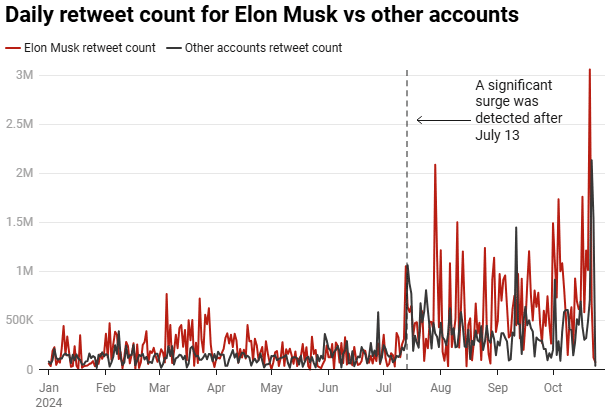
Still, after a lengthy, challenging period post-acquisition in 2022, X Corp. is projected to achieve its first year of advertising revenue growth in 2025. Nonetheless, these figures remain significantly lower than the $4.5 billion in ad revenues recorded in 2021.
Artificial Intelligence Startup xAI
In 2023, Elon Musk founded xAI, an artificial intelligence startup that aims to develop advanced AI models. The acquisition of X was a significant milestone for this goal since it helped merge social media with AI capabilities.
xAI’s flagship product is Grok, an AI chatbot that is currently integrated into the X platform. However, Grok has faced criticism for generating inappropriate content, which convinced xAI to recruit safety-focused personnel to address the issues.
— Elon Musk (@elonmusk) April 10, 2025
In addition to this, xAI’s operations have raised environmental concerns. The company’s Memphis facility, for instance, has been said to operate numerous gas turbines without proper permits. This led to quite a legal scrutiny and backlash from the community.
Elon Musk’s Fluctuating Net Worth and Controversies
Elon Musk was the first person in the world to cross the $400 billion mark. His net worth has since dropped below $300 billion, only four months after he reached this milestone. According to the Bloomberg Billionaires Index, Musk lost billions due to Tesla’s continued stock decline, which brought his total wealth to $297.8 billion at the beginning of April 2025.
Tesla’s stock price initially soared after Trump’s election, which led Musk to record wealth. However, his role in the government, which has included slashing life-saving programs such as Ebola containment, pediatric cancer research, and starvation prevention, has increasingly made Tesla a target for vandalism and protests in the United States.
His polarizing behavior, as well as his highly controversial social media activity, didn’t help either. Instead, it alienated potential customers and led existing Tesla owners to distance themselves from the business. For example, a recent poll of 100,000 Germans showed that 94% would not buy a Tesla in response to Musk’s actions and controversies.
In addition to public backlash, Tesla faced challenges due to trade tariffs imposed by the Trump administration. New global tariffs have led to market instability across the stock market and greatly affected the auto industry. The cost of materials for Tesla’s production increased, which impacted the company’s profit margins and caused volatility in the stock price. China’s counter-tariffs also hit the company hard, which sold 36.7% of its cars there in 2024 and was forced to pause new orders for some of its models.
Musk’s wealth fluctuating tremendously for many years but the volatility has increased significantly in recent months. Just a few days after the market crashed in response to the new tariffs, he saw the biggest single-day wealth surge among the world’s richest people, adding $35.9 billion to his fortune in a single day, according to Business Insider.
Musk’s one-day gain was the largest among his peers as of 2025, even as his overall wealth remains down over $100 billion for the year.
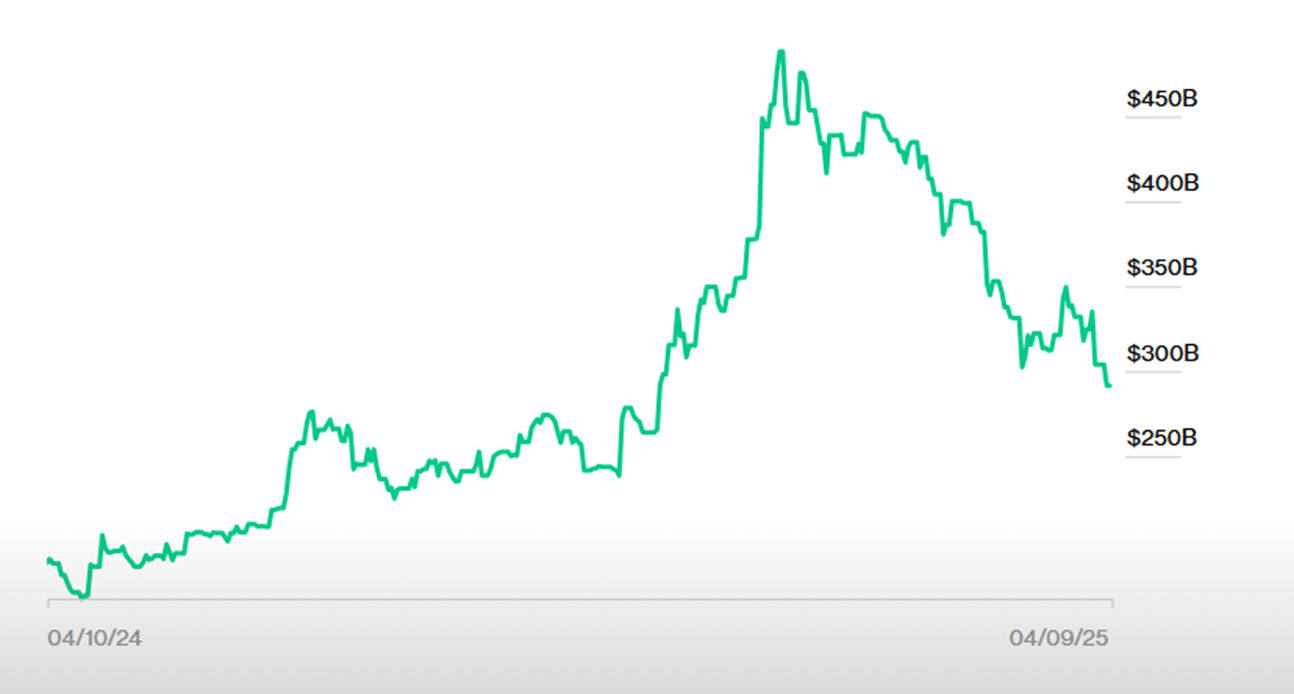
Even though his wealth isn’t what it used to be, Elon Musk remains the world’s richest person by a significant margin. His wealth primarily comes from his holdings in Tesla and SpaceX, as well as additional ventures like The Boring Company, social media company X, Neuralink, and the AI startup xAI.
Tesla’s Stock and Earnings
According to Forbes, Elon Musk holds around 12% of Tesla’s stock, excluding options, though he has pledged more than half of his shares as collateral for personal loans. This number doesn’t include the massive performance-based stock option package granted to Musk in 2018 that could be worth up to $100 billion or 12% of the company.
In early 2024, a Delaware judge voided the pay package, ruling that Tesla’s board had not acted independently when approving the compensation package. However, it is still up for appeal, and the decision could very well be overturned.
This means that Elon Musk could eventually control up to 24% of Tesla if he wins the appeal and exercises those options, but we are yet to see how this will end.
Ownership Stakes in Other Businesses
SpaceX is worth roughly $350 billion, based on a private share sale from December 2024. Musk owns around 42% of this business, which equals $147 billion.
Musk bought Twitter in a $44 billion deal in 2022. The company, which is now renamed X, was worth nearly 70% less since its acquisition in August 2024. However, in March 2025, the valuation of X soared after he allocated a 25% stake in his AI startup, xAI, to the financial institutions that helped fund his acquisition of X.
In March 2025, xAI acquired X in an all-stock deal, valuing X at $33 billion (excluding $12 billion in debt). The deal also valued xAI at $80 billion. However, it’s important to note that the valuations of private companies are often based on limited investor sentiment rather than real fundamentals or financial data, and they can be heavily inflated, especially in the AI industry.
Musk also owns about 54% of xAI. Based on that valuation, which may be significantly inflated, his stake in the company is worth approximately $43.2 billion.
In addition to these businesses, Musk’s wealth is comprised of other, smaller assets. His infrastructure startup, Boring Company, and his implantable brain-computer business Neuralink, contribute $5 billion to his net worth each.
Elon Musk in Politics
Elon Musk’s involvement in politics has become increasingly visible and controversial over the years. Many business leaders these days try to steer clear of politics, but Musk has done the exact opposite.
For many years, he was fairly centrist and backed multiple democrats, including Obama and Clinton. At one point, Musk even showed support for Andrew Yang’s universal basic income plan and Kanye West’s 2020 campaign.
However, since 2022, Musk shifted rightward, voting Republican for the first time. One of the main turning points in his politics seemed to be the failed assassination attempt against Donald Trump on July 13th. From then on, he started pouring tens of millions into conservative causes and candidates.
Soon after Musk endorsed Trump, he became the top individual donor of the 2024 election and regularly joined him on stage at campaign events. He also backed the efforts of the Republican Party in key races like the Wisconsin Supreme Court, attempting to influence car regulation.
On an international level, Musk has been involved with far-right figures and anti-immigration movements, including the controversial AfD party in Germany. This sparked a lot of backlash across Europe, particularly given his growing influence via the social media company X. The influence drew criticism not only from the media but also from governments in France, the UK, and Germany.
Musk’s most headline-grabbing moment came during President Trump’s second inauguration when his arm gestures on stage drew comparisons to Nazi or Roman fascist gestures. He brushed off the criticism, as usual, calling it overblown.
Finally, Musk has been heavily involved in DOGE, not the meme coin, but the Department of Government Efficiency. It was born from a Musk-Trump conversation as an advisory body aimed at cutting federal costs and agencies.
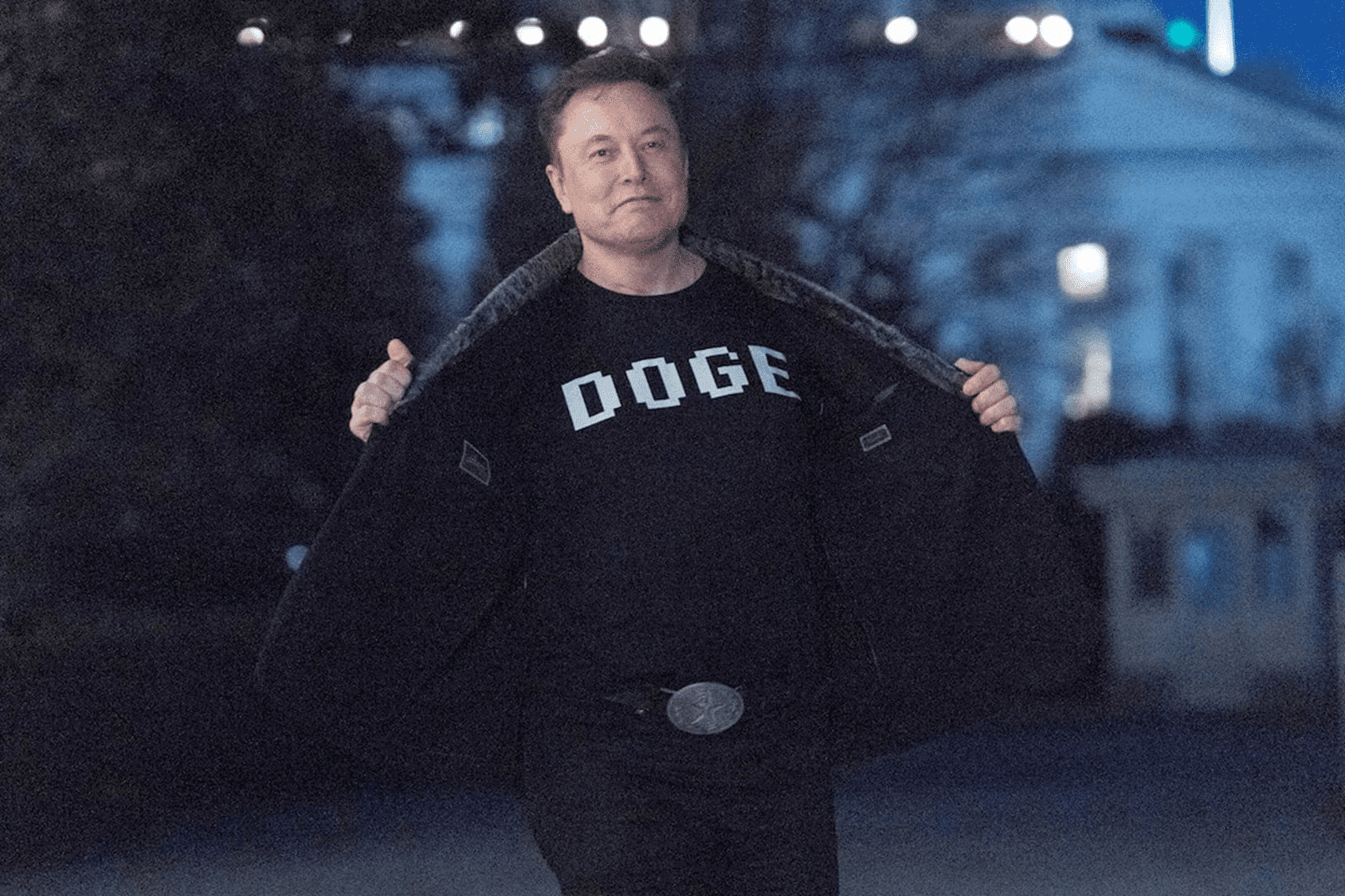
Musk isn’t technically in charge of DOGE, but in practice, he is treated as the organization’s leader, and Trump regularly refers to him as the head of the department. He has since pushed mass layoffs, demanded secrecy, infiltrated multiple major databases full of sensitive data, and sparked a deluge of legal scrutiny. He even waved a chainsaw at CPAC, likening himself to Argentina’s president Javier Milei, to symbolize his approach with DOGE.
Love him or hate him, Elon Musk’s political presence is impossible to ignore nowadays, and it has only grown stronger in the Trump era.
Elon Musk’s Legal Troubles
Elon Musk has faced endless legal troubles over the years, as can be expected for such a prominent and controversial figure. His legal troubles have intensified in recent years, spanning corporate disputes, labor law violations, international data privacy concerns, and government ethics.
Musk is also involved in a legal battle with OpenAI, the company he cofounded in 2015. After he left in 2018, he criticized OpenAI’s shift toward the for-profit model. In February 2025, he made an unsolicited $97.4 billion bid to acquire the business. OpenAI refused, labeling his offer as a disruptive tactic, and countersued Musk for alleged harassment and interference with its operations. The jury trial is scheduled for spring 2026.
In his bid, Musk said: “It’s time for OpenAI to return to the open-source, safety-focused force for good it once was. We will make sure that happens.”
Musk’s roles as head of DOGE, an influential advisor to the president, and the CEO of companies like Tesla and SpaceX (a massive government contractor) have raised many concerns about conflicts of interest. Critics argue that he has already made major decisions that benefit his enterprises, which include ongoing investigations into Tesla’s Full Self-Driving software and a proposed FAA fine against SpaceX. He also promised to “delete” the Consumer Financial Protection Bureau, which would have regulated X’s upcoming dive into payments.
In Europe, Ireland’s Data Protection Commission is investigating X for potentially using European users’ public posts to train the chatbot Grok without consent. This could constitute a violation of the GDPR, which mandates strict data usage protocols. In August 2024, the European Center for Digital Rights (Noyb) filed a complaint in eight European countries, alleging that X used personal data from over 60 million users to train Grok without consent.
Musk is president of the Musk Foundation, which he founded in 2001 to provide solar-powered energy systems in disaster areas, and has an interest in human space exploration, renewable energy, and pediatrics. The foundation has been subject to a lot of controversy, too. Its assets reached $9.4 billion by the end of 2021, but it only gave $160 million to charities that year, prompting critics to argue that it is little more than a vehicle for Musk to reduce his tax burden.
The foundation has also faced criticism for its donations being closely tied to Musk’s family and companies.
Elon Musk’s Crypto Stance and Holdings
Elon Musk has made significant personal investments, as well as major investments in crypto over the years. In early 2021, for instance, Tesla invested $1.5 billion in Bitcoin. Tesla has since sold a portion of its holdings, but Musk confirmed personal ownership of Bitcoin during the B Word conference in 2021.
At the B Word conference, Musk participated in a panel discussion titled “Bitcoin as a Tool for Economic Empowerment” alongside Twitter CEO Jack Dorsey and ARK Invest CEO Cathie Wood. He was interviewed on his views on crypto, his Bitcoin holdings, and investments in altcoins like Dogecoin. You can watch the full interview here:
In March 2024, Musk’s companies, SpaceX and Tesla, held over $1.3 billion in Bitcoin. In January 2025, Tesla reported Bitcoin gains of $589 million following the U.S. accounting rule change.
In addition to Bitcoin, Musk has publicly acknowledged holding Ethereum and has been closely linked to Dogecoin (DOGE). Musk’s affinity for Dogecoin earned him the nickname “The Dogefather” because of his many public endorsements, which surely helped boost the coin’s market value.
Even though he is a fierce proponent of cryptocurrency and most likely has a lot invested in it, the exact holdings of Elon Musk in crypto remain a mystery.
What Can We Learn from Elon Musk’s Story?
As the wealthiest and one of the most influential people in the world, Elon Musk’s story has a lot to teach us. His long-term vision for the future, such as the colonization of Mars, renewable energy, and electric vehicles, has driven his ventures. He has consistently pushed the boundaries of what is possible and shown that he is more than willing to invest in revolutionary ideas (even when they seem unrealistic at first).
Despite numerous setbacks, Elon Musk has repeatedly shown resilience. Whether it was SpaceX’s early rocket failures or Tesla’s near bankruptcy, he stayed focused and kept going, which is one of his strongest qualities.
Musk also knows the value of integrating his many ventures. By focusing on renewable energy and sustainability across multiple industries, he has maximized impact and created impressive synergies. He has also invested a fortune of his own money into his companies when they were struggling, and others doubted them. Sometimes, taking risks with your resources (including time, money, and energy) can pay off massively if you are strategic about it.
From Tesla Model S to SpaceX’s reusable rockets, Musk has always put the focus on product excellence. He has had a hands-on involvement in product design and engineering, which is a core part of his companies’ success.
Still, while his career is filled with positive stories, it is also a cautionary tale in many ways. Musk has made countless ambitious promises that haven’t materialized as expected. For instance, he promised to have self-driving cars fully operational or reach Mars by a specific date, but his plans have often been delayed or proven more complicated than anticipated. This shows that one must be cautious when making public promises since over-promising can damage credibility and build public cynicism.
Over the years, Musk has also faced many challenges in managing his workforce. His expectations have led to employee burnout, lawsuits, and high turnover, and many describe his leadership as intense. Leading with an iron fist might yield results in the short term, but it is unsustainable in the long term.
Finally, Musk’s behavior and involvement in politics, especially in recent years, has been extraordinarily controversial and damaging to his businesses. He has used social media to make statements that led to legal issues and public outcry. His freewheeling approach has often been a double-edged sword for his reputation – and even his net worth.
FAQs
What is Elon Musk's net worth in 2025?
As of April 2025, Elon Musk's net worth is over $330 billion, but it fluctuates greatly.
Is Elon Musk the richest person in the world?
Yes. Elon Musk currently holds the title of the world's richest person.
Why did Elon Musk's net worth drop in 2024-5?
Musk's net worth experienced a major decline due to stock market volatility, especially in Tesla's stock price, the new global tariffs imposed by the Trump administration, and his controversial political involvement.